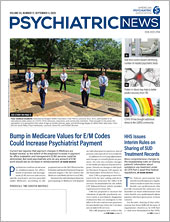Emergency department patients who survive an opioid overdose are 100 times more likely to die of an unintentional overdose and 18 times more likely to die of suicide within a year than patients who visit the emergency department for other reasons, a study in the American Journal of Preventive Medicine has found. The study also revealed that patients who survive an overdose of sedative or hypnotic drugs such as barbiturates or benzodiazepines are nearly 25 times more likely to die of unintentional overdose and nine times more likely to die of suicide within a year compared with their peers in the general population.
“Our findings are among the first to document the exceedingly high rates of fatal drug overdose and suicide among patients who previously visited the emergency department for a nonfatal opioid overdose. This study underscores the need to link such patients up with appropriate substance use and mental health treatment,” said lead author Sidra Goldman-Mellor, Ph.D., M.P.H., an assistant professor of public health at the University of California, Merced.
Goldman-Mellor and her colleagues analyzed data from the records of approximately 647,000 patients aged 10 years or older who received emergency department care in California between 2009 and 2011. The researchers then matched these data with death records from the California Department of Public Health for all people who died in the state between 2009 and 2012.
Among the patients, 21,080 visited an emergency department for an opioid overdose. Within a year, 368 died of unintentional overdose and 63 died of suicide, including 29 whose suicide involved an overdose. Another 75,391 patients visited for a sedative or hypnotic overdose. Within a year, 232 died of an unintentional overdose and 118 died of suicide, including 35 whose suicide involved an overdose. Death rates were proportionately much lower among the 500,216 patients who had visited for reasons other than overdose. In this group, 152 died of an unintentional overdose and 157 died of suicide, including 32 whose suicide involved an overdose.
These figures indicate a need for interventions that begin in the emergency department, such as starting patients on medication treatment with buprenorphine for opioid use disorder. Such interventions are more common than they used to be, but they remain a challenge, Goldman-Mellor told Psychiatric News. “Rolling out new interventions in hospital settings is a complex and expensive endeavor that entails training and other resources. Many hospitals do not necessarily have the resources to undertake such measures.”
Mark Olfson, M.D., M.P.H., study co-author, said that part of the challenge involves staffing.
“Most emergency departments do not have psychiatrists or other addiction specialists available on site or on call,” said Olfson, who is the Elizabeth K. Dollard Professor of Psychiatry, Medicine, and Law and a professor of epidemiology at Columbia University Irving Medical Center. “Ideally, in urban centers where there are more options, people with opioid overdoses should be routed to emergency departments that offer buprenorphine induction rather than traditional brief detoxification that has little evidence of helping these individuals.”
Psychiatrists who work in emergency departments should be ready to step in, said Goldman-Mellor.
“[They] can serve as important partners in implementing harm-reduction strategies for both opioid and sedative/hypnotic overdose patients, as well as in providing warm handoffs to outpatient mental health care providers,” she said.
Overdose visits that were coded as deliberate self-harm were excluded from the research. However, some of the overdose visits included in the study may have been attempts at suicide, leading to a potential limitation of the study, said Goldman-Mellor, noting that many patients are simply not screened for suicidality.
“Morever, patients don’t always report suicidal intent, even if it’s there, for complex reasons related to stigma, potential legal or clinical care consequences, or because they themselves are not always sure of their intent,” she said. “Also, of course, some overdose patients cannot report suicidality because they are medically incapacitated.”
All overdose patients who can be screened should be screened, especially if their overdose involves opioids, Olfson said.
“Although people whose nonfatal opioid overdoses are intentional have a higher risk of suicide than people whose nonfatal opioid overdoses are unintentional, both groups have elevated risks of unintentional overdose death and suicide,” he explained. “For this reason, patients who survive opioid overdoses, whether unintentional or intentional, should be carefully evaluated for substance use disorders and suicide risk. Based on this evaluation, patients should receive appropriate referrals for follow-up substance use and mental health care.”
This study was funded by the National Institute of Mental Health. ■
“Mortality Following Nonfatal Opioid and Sedative/Hypnotic Drug Overdose” is posted
here.

